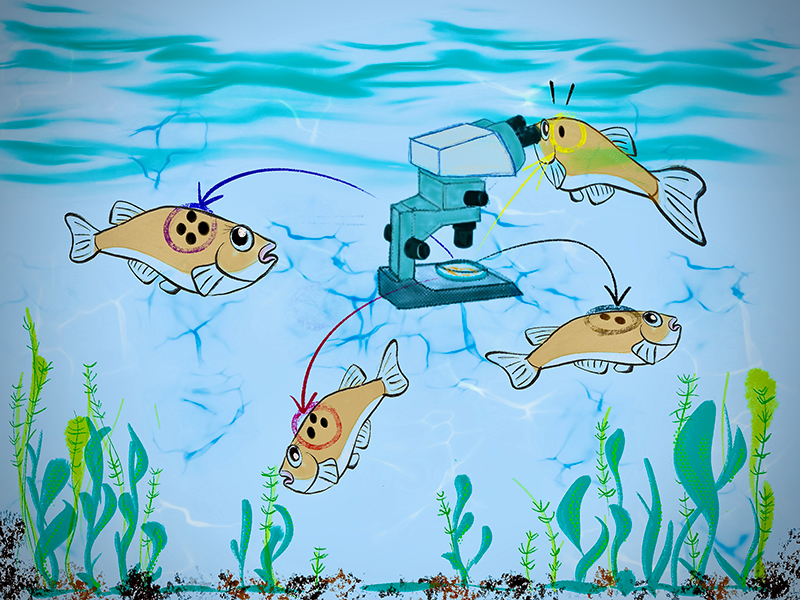Kyoto, Japan -- A variety of tracking methods are utilized in scientific research. Whether the units or entities are frequencies, IP addresses, or isotopes, distinct differences make tracking possible.
Killifish or medaka -- Oryzias latipes – are often used as a model animal in medical and drug discovery research for human diseases. These small fish models are genetically homogenous and have featureless, monotone pigmentation. This lack of differentiation in appearance poses a challenge for individual identification, which is necessary for long-term analyses typically conducted in late onset disease research or drug discovery.
Now, a team of researchers at Kyoto University has established a method to identify individual inbred medaka in a uniform environment. The fish were tracked at various intervals for 34 weeks by examining temporal changes in the characteristic patterns of dark spots on their heads.
"Despite the medaka's ability to adapt its body color to its environment, external conditions such as light did not hinder photographing the spots for a short period of time," says lead author Hajime Morizumi.
With recent advances in genome editing technology, the medaka has become the animal model of choice particularly for investigating slowly progressive, long-term diseases such as Alzheimer's. The inbred medaka used in this KyotoU study have much greater genetic uniformity than human twins and are kept in strictly controlled environments.
"Despite the difficulty of this challenge, we were able to make individual distinctions. We hope our identification method will improve accuracy in the use of in vivo MR microscopy," adds co-author Naozo Sugimoto.
The team was able to track 30 inbred and six non-inbred medakas after verifying the variety of spot distribution patterns over a four-week interval. According to Ueno, this simple identification method may contribute to biometrics for medical and drug discovery research.
"As a follow-up, it would be interesting to discover what causes such individual differences," notes group leader Tomohiro Ueno.

Caption: Genetically uniform medaka killifish are identifiable by dark spots
【DOI】
https://doi.org/10.1038/s41598-023-27386-w
【KURENAI ACCESS URL】
http://hdl.handle.net/2433/278760
Hajime Morizumi, Naozo Sugimoto, Tomohiro Ueno (2023). Individual identification of inbred medaka based on characteristic melanophore spot patterns on the head. Scientific Reports, 13:659.





